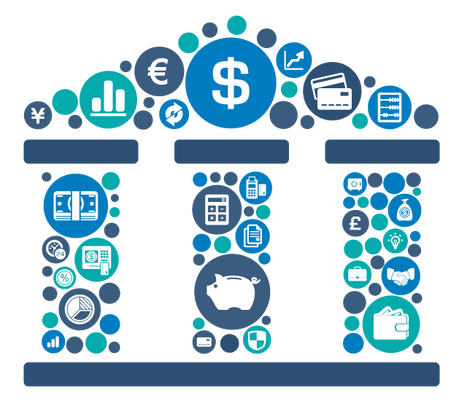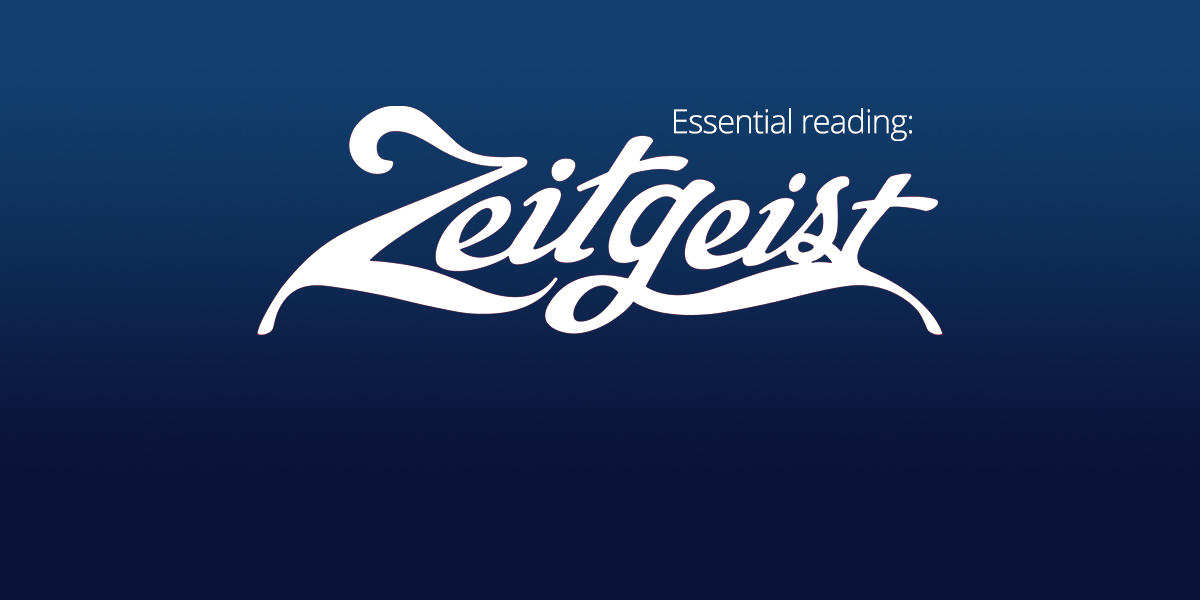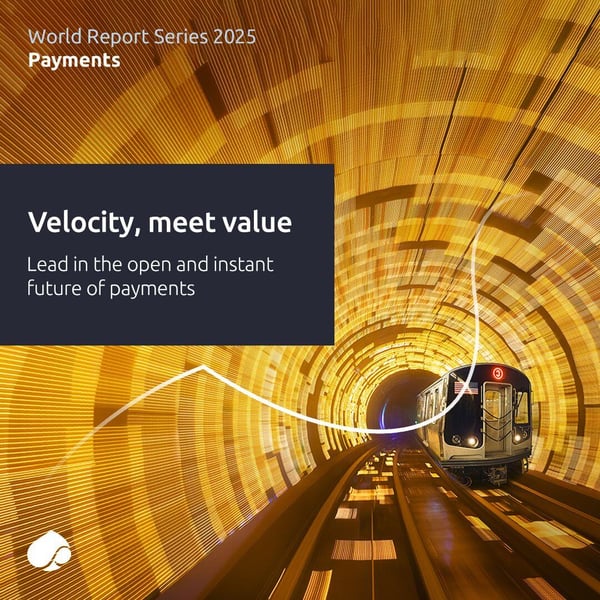What it takes to move the needle on Open Banking from 1.0 – 3.0 and beyond.
Will 2020 become the year of truth for Open Banking? Will it take more regulation, better technical standards, more pressure from watchdogs or? What do we, as we cross the Rubicon into unchartered territory, need most? More excel spreadsheets and forecasts while juggling new pricing and business models? We don’t think so…
Apart from courage, clearly reading the sign of the times is the most important guide for any player in the financial services domain going forward – incumbent or fintech. Successful adoption of Open Banking is about relevance for the end user, and that has everything to do with feeling society’s pulse. If 2018 was Open Banking 1.0, and 2019 2.0, what will 3.0 bring?
Tech creatures of habit, like myself, still love to put numbers on important events as if they were software releases. Wrong on both counts. A thing of the past. Important events simply evolve, change and move on as we well know from history. Industrial revolutions have not been replaced by others but evolved into the next. Software releases with patches and updates have become redundant too in a world of software as a service. From boxed-in to free flow. So why still make the point? Because we mortals need to be nudged into action and those numbers help us move from one steppingstone to the next.
Open Banking 1.0 – infra and compliance
The 1.0 stage was – correct me is – all about getting the infrastructure ready for openness and compliant with the relevant regulation. In a weird way this is a stage banks feel comfortable with and suppliers love. Strategies, workshops, tech suppliers making their pitch, it almost feels like business as usual but on different tech. Do not be fooled. In the middle of last year ING’s Global Head of Commercial Banking and Transaction Services Mark Buitenhek spoke about the complexities and uncertainties of ‘opening up a large tier 1 bank’ in a podcast. “In the long run you can only serve your clients the best way possible to make them stay with you. It is not about a simple business case or a single item, and you constantly wonder is this really gonna deliver value and build our brand? You know, sometimes we get it, sometimes we are wrong.” And as the UK heads up the European pack on Open Banking, globally Singapore leads the way with DBS and OCBC in terms of openness and richness in API scope, as per the Innopay Open Banking Monitor (to be updated anytime this month).
It is fair to say that this is no mean task for any incumbent bank and the neo banks have a real advantage here; that is if they are founded on new tech. The more complex, varied and embedded (read outdated) the core systems, the harder the task. Many European mainland banks are still in the 1.0 stage and 2020 will be a defining year in terms of testing and moving on to 2.0.

Open Banking 2.0 – building the business case
As my visionary founding partner Mark Hartley already stated years ago: “The law of unintended consequences” has turned PSD2, designed to create more competition, into a major opportunity for existing banks. They have the trust, they have the customers, they have data”.
We at BankiFi picked up that challenge by designing a business case for banks the new way: around the customer needs, rather than the banking products. Driven by a purpose to create the relevant services sole traders and entrepreneurs need to run their business, through the bank. Today that means a focus on combining accounting and banking in the one channel they already know – the bank app or web environment. Why have two services and two cost points if the bank can serve both? As open banking and the infrastructure matures, large corporate clients too could access the data that is now held in three or more separate systems through one single source. The corporate banking portal can be their – and the bank’s – single point of access to facilitate e.g. cash or liquidity management.
Over the past year we have met with over 100 banks internationally and all have the same question: How can we monetise our investment in a zero-interest environment? Indeed, getting fit is more than a new year’s resolution for banks, it is pure necessity. As per the recent EBA Risk Assessment Report, only 25% of European banks hover above the necessary healthy 1% price to book ratio, whereas the vast majority of their US counterparts are comfortably above that point. It is only one indicator, but it underpins the need for a relevant business case that sets one bank apart from another in the eyes of the beholder: their customers. Choice is the key word here, the ‘why, who and what’ need to be determined before diving into the resource-hungry ‘how’.
Whereas data insight wins in the consumer space in order to make more relevant offerings, data sharing across applications and platforms is key for commercial banking. Where universal banking used to be based on a set of financial products that were then adapted to a segment, we now see very smart banks truly segmenting from the customers' perspective. Think the award-winning Live Oak Bank in the US, which was established to serve small businesses with the very best access to capital. A bank, who by learning their way through the needs of very niche segments, delivers a superior lending experience to small business owners. All fuelled by the best technology and ready to open this up to wider business needs.
In Australia the need for great technology to support businesses scattered around very large and remote areas lead to the opening up of Judo Bank. Centralised technology, standardised components and a highly equipped customer care team deliver a fast and super easy banking experience. And although Australia recently delayed the implementation of Open Banking by six months, this is no doubt because they intend to go deeper and further and beyond banking!

Open Banking 3.0 – Beyond open into societal relevance
Late 2019 I was asked to do a keynote around Open Banking 3.0, aka the next stage, at a festive dinner for a large group of German bankers. And although I got free reign to ‘go for it’, it obviously was not the idea to send them all home deeply depressed over the state of incumbent banks, the lack of pace, the huge financial reserves of big tech waiting to swallow them and so on.
My usual habit of ‘reaching far back to leap forward’ gave me a hook: the one thing great leaders (companies, regimes, individuals) have in common is their ability to read the sign of the times. The skill to honestly breathe in the 'Zeitgeist', to look through a very clear lens at the naked truth, not distracted by clutter and noise. And then act upon it.
Churchill did it when he read the signs of the times in the early thirties, not liked by many he still charted out a strategy that caused short term upset, but long-term victory. LBJ was not a typical progressive front runner, but he felt in his gut that is was time to push through the equal rights bill. Anyone reading the papers and observing the world around us today knows, as my very eloquent friend and Director of the London based CSFI (Centre for Studies for Financial Innovation) Andrew Hilton puts it: “The Zeitgeist is running hard in favour of the environment and sustainability and away from red-in-the-tooth-and-claw-capitalism.”
As a financial services community – incumbent or fintech – we owe ourselves and our stakeholders just that. Think about societal impact as we deploy new technologies and business models. It is not hard to imagine how great anti-money laundering fintech can also be deployed to search out human traffickers as the joint initiative of RedCompass and Stop the Traffik in the UK demonstrates. And as we see the implementation of a social credits system in China, we also see an emergence of technology that equips AI with a moral compass like the Seldonian algorithm. This tool enables banks for example to ensure that male and female entrepreneurs are judged evenly when it comes to access to capital. Prejudices can hereby be filtered out of the AI qualifying process.
And as we are talking 'beyond', banks have a massive opportunity to embrace the identity angle in Open Banking. And yes, we learn and tweak as we set bold steps, but read what Aadhaar is doing in India. This biometric identity lifts an entire population out of poverty, creating easy and secure access to bank accounts and entire ecosystems around their daily (working) lives. The same tech we deploy to build transaction based eCommerce environments can connect people in remote areas to the real economy, like Safal Fasal, which connected at launch date already 30,000 single farmers to an end to end agricultural ecosystem.
The call for transparency, sustainability and an equal contribution to the world we live in can no longer be ignored and makes plain common sense as it offers great (business) opportunities for all of us too.
So let’s get down to some essential daily reading in 2020: read the ‘Zeitgeist cover to cover’. Couple your experience of yesterday with curiosity for tomorrow. Underpinned by a core purpose and mission, we can then draw out a strategy that is not just successful, but sustainable. For all.
And beyond 3.0? Read our next blog on 'The end of the App jungle, the banks' Phoenix moment? We will explore the move from APP Banking to API Banking - why banks will learn fast from Fintech and build smart solutions around their core. Their channel by the customer's choice.
From all of us at BankiFi – let’s go Beyond Open in 2020!
.png)

.png?width=600&name=Rectangle%20316%20(3).png)
.png?width=600&name=Webinar%20assets%20(1).png)

